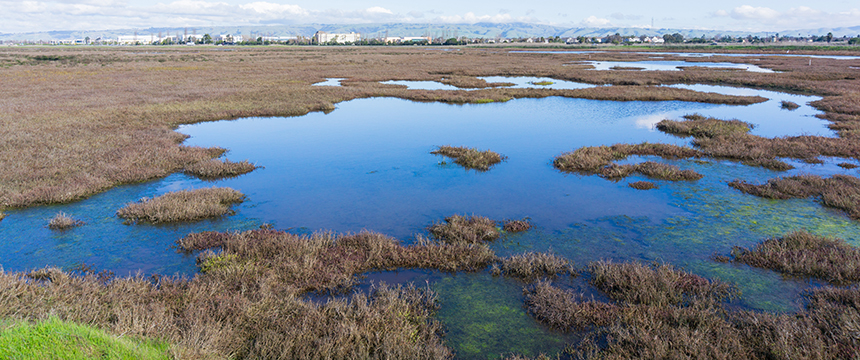Army Corps Changes Course: CWA Jurisdictional Determinations May Require a New Look

In a move that could have wide-ranging implications for developers of real estate, including renewable energy projects, throughout the United States, the U.S. Army Corps of Engineers (the “Corps”) recently announced that it was broadening its definition of “waters of the United States” under the Clean Water Act, consistent with the Biden Administration’s policy positions and recent court litigation. One notable result of this announcement is that project developers who obtained a Corps Jurisdictional Determination (“JD”) prior to the change in policy may no longer be able to rely on it for permitting or development purposes.
The Clean Water Act (the “CWA”) prohibits the discharge of pollutants into “navigable waters,” which the CWA defines broadly as “waters of the United States” (“WOTUS”). The Corps has jurisdiction under the CWA to issue permits for the discharge of dredged or fill materials into WOTUS, including wetlands adjacent to WOTUS. By regulation, the Corps has established a formal procedure to obtain the Corps’ official position on whether a property contains WOTUS that are subject to the Corps’ jurisdiction. The Corps issues its decisions by way of both Preliminary Jurisdictional Determinations (“PJDs”), which are only advisory and not binding upon the agency, and Approved Jurisdictional Determinations (“AJDs”), which are final and can be relied upon for permitting purposes. The Corps also issues “stand-alone” AJDs, which are not obtained in conjunction with a permitting action. Stand-alone AJDs are routinely obtained to provide comfort for project developers (and their lenders or other financing parties) in assuring that jurisdictional WOTUS on a project site are accurately mapped, and that proposed development can avoid undevelopable areas.
JDs are particularly useful in confirming the scope of the Corps’ jurisdiction over features on a project site that may not be obviously WOTUS – for example, wetlands, water-retaining ditches, desert washes, or ephemeral streams that flow only intermittently. The scope of the Corps’ jurisdiction over which such features are WOTUS, however, has consistently been a moving target. Prior to 2015, the definition of WOTUS was governed principally by the U.S. Supreme Court decision Rapanos v. United States, 547 U.S. 715 (2006), a decision which produced competing tests authored by Justice Scalia (in a plurality opinion) and Justice Kennedy (in a concurrence). In 2015, the Obama Administration expansively redefined the scope of waters eligible for protection under the Clean Water Rule, which protected approximately 60% of the nation’s waters, including intermittent and ephemeral streams. However, the Trump Administration repealed the Clean Water Rule and, in 2020, finalized the Navigable Waters Protection Rule (the “NWPR”), which rolled back the Obama-era protections and significantly narrowed definitions of tributary streams and adjacent wetlands, thereby removing many water features from the Corps’ oversight/permitting requirements.
After this 2020 rulemaking, many developers moved quickly to take advantage of the narrower NWPR definition of WOTUS. Many sought stand-alone AJDs, assuming that they would have up to five years – the validity period of a JD – to obtain any required permits. But in August 2021, after a federal district court in Arizona vacated the NWPR, the Corps and the U.S. Environmental Protection Agency (“EPA”) halted implementation of the NWPR nationwide and announced they would interpret “waters of the United States” consistent with the pre-2015 regulatory regime until further notice.
The Corps then took this a step further with its January 2022 announcement that certain permitting decisions may be upended by the current administration’s broader definition of WOTUS. The Corps announced that it will reopen a prior stand-alone AJD under two circumstances: (1) if requested by the recipient; and (2) if a project requires a permit from the Corps for impacts to WOTUS. Practically, this means that although an AJD will otherwise remain valid until its five-year expiration date, if a Corps permit is applied for within that five-year period, the agency will reopen the AJD. Accordingly, such stand-alone AJDs can no longer be relied upon for permitting purposes.
As a result of the Corps’ announcement, Project developers that obtained JDs from the Corps while the NWPR was in effect, but have not yet used these JDs in applying for a Corps permit, likely will need to revisit the sufficiency of the JD for permitting purposes. Project developers may also face questions from lenders or other project investors as to whether wetlands delineations completed while the NWPR was in effect must be redone or otherwise reconsidered in order to ensure their accuracy. One option for resolving these questions may be to obtain a new JD consistent with the pre-2015 interpretation of WOTUS.
However, further changes to the definition to WOTUS are likely on the short-term horizon. The Corps and EPA have published a new proposed definition of WOTUS that is currently subject to public comment (Revised Definition of “Waters of the United States,” 86 Fed. Reg. 69372 (Dec. 7, 2021)). In addition, the U.S. Supreme Court has agreed to hear a case (Sackett v. EPA, No. 21-454, cert. granted Jan. 24, 2022) which may resolve the two competing pre-2015 Rapanos definitions of WOTUS. Either of these developments may result in different jurisdictional analyses than what exists today. Accordingly, developers will want to carefully consider whether, and when, they approach the Corps with a request for an updated JD.
Foley environmental attorneys are well-positioned to assist on WOTUS matters, and can provide practical guidance on navigating this ever-changing area of law.
For additional information, contact any of the authors.



